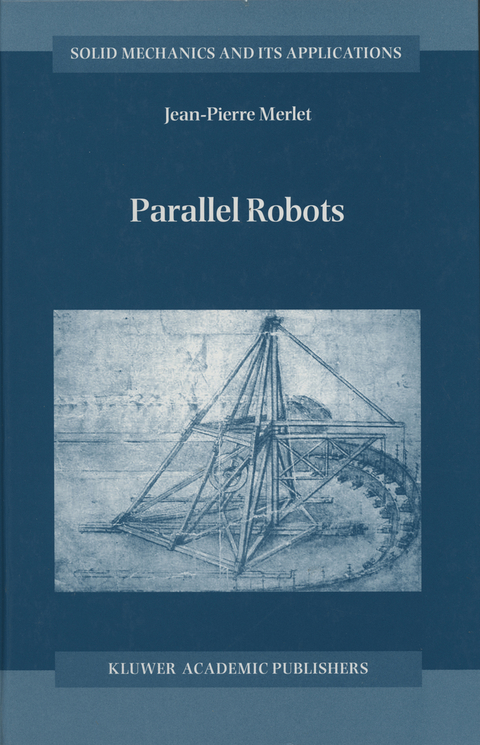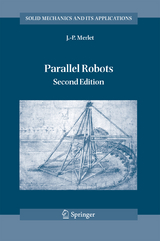
Parallel Robots
Springer-Verlag New York Inc.
978-1-4020-0385-1 (ISBN)
- Titel erscheint in neuer Auflage
- Artikel merken
1 Introduction.- 1.1 Characteristics of classical robots.- 1.2 Other types of architecture.- 1.3 Needs for robotics.- 1.4 Parallel robots: definition.- 1.5 Contents.- 1.6 Exercises.- 2 Architectures.- 2.1 Introduction.- 2.2 Planar robots.- 2.3 Spatial motion robots.- 2.4 Articulated truss.- 2.5 Examples of applications.- 2.6 Notion of standard manipulators.- 2.7 Exercises.- 3 Jacobian and inverse kinematics.- 3.1 Inverse kinematics.- 3.2 Inverse jacobian matrix.- 3.3 Jacobian matrix.- 3.4 Jacobian matrix and internal sensors.- 3.5 Calibration.- 3.6 Exercises.- 4 Direct kinematics.- 4.1 Planar mechanism.- 4.2 Mechanisms for translations in space.- 4.3 Spherical mechanisms.- 4.4 6 degrees of freedom mechanisms.- 4.5 Nair systematic method.- 4.6 Case of the general robot.- 4.7 Summary of results and conclusion.- 4.8 Fast numerical methods.- 4.9 Direct kinematics with extra sensors.- 4.10 Conclusions.- 4.11 Exercises.- 5 Singular configurations.- 5.1 Introduction.- 5.2 State of the art.- 5.3 Grassmann geometry.- 5.4 Degrees of freedom associated with singularities.- 5.5 Manipulability and condition number.- 5.6 Practical search for singularities.- 5.7 Mechanisms in permanent singularity.- 5.8 Singularity-free path-planning.- 5.9 Exercises.- 6 Workspace.- 6.1 Workspace limits and representation.- 6.2 Calculation of the constant orientation workspace.- 6.3 Planar manipulator.- 6.4 6 dof manipulators.- 6.5 Trajectory checking.- 6.6 Path-planning.- 6.7 Exercises.- 7 Velocity and Acceleration.- 7.1 Relations between the articular velocities and the generalized velocities.- 7.2 Extrema of the generalized velocities.- 7.3 Extrema of the articular velocities in a translation workspace.- 7.4 Accelerations.- 7.5 Conclusion.- 7.6 Exercises.- 8 Static analysis.- 8.1 Relations between generalized and articular forces.- 8.2 Articular forces and maximal generalized forces.- 8.3 Parallel robots as force sensors.- 8.4 Stiffness and compliance.- 8.5 Extrema of the stiffnesses in a workspace.- 8.6 Balancing.- 8.7 Exercises.- 9 Dynamics.- 9.1 Introduction.- 9.2 MSSM inverse dynamics.- 9.3 SSM dynamics.- 9.4 Active wrist dynamics.- 9.5 Computation time.- 9.6 Examples.- 9.7 Exercises.- 10 Design.- 10.1 Introduction.- 10.2 Design method.- 10.3 Exercises.- 11 Conclusion.- WEB adresses.- References.
| Reihe/Serie | Solid Mechanics and Its Applications ; 74 |
|---|---|
| Zusatzinfo | XVI, 356 p. |
| Verlagsort | New York, NY |
| Sprache | englisch |
| Maße | 155 x 235 mm |
| Themenwelt | Informatik ► Theorie / Studium ► Künstliche Intelligenz / Robotik |
| Technik ► Maschinenbau | |
| ISBN-10 | 1-4020-0385-4 / 1402003854 |
| ISBN-13 | 978-1-4020-0385-1 / 9781402003851 |
| Zustand | Neuware |
| Haben Sie eine Frage zum Produkt? |
aus dem Bereich



